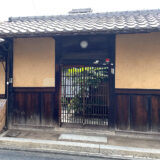When walking through the streets of Kyoto or other historic areas in Japan, you may come across a piece of fabric draped gracefully across a shop or restaurant entrance. This is called a noren (暖簾), a traditional Japanese fabric divider with deep cultural, historical, and artistic significance.
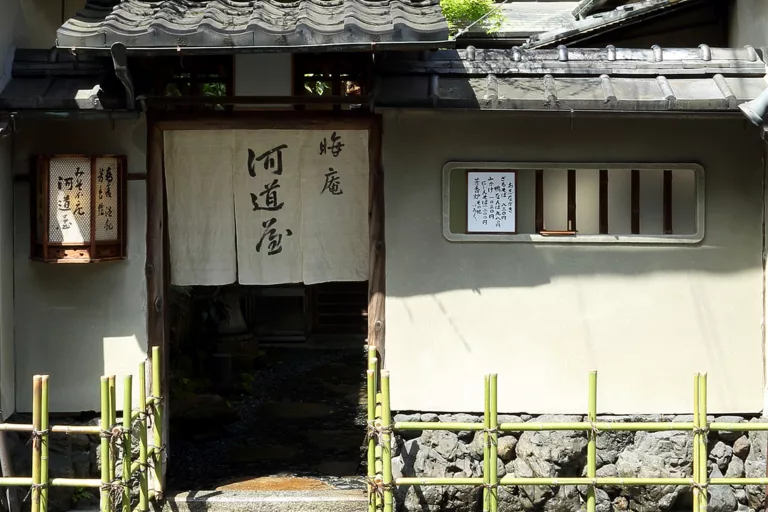
What Is a Noren?
A noren is a rectangular cloth often split vertically into two or more sections. It is traditionally hung in the doorways of shops, restaurants, and homes in Japan. Though similar textile partitions exist across Asia, the noren is considered uniquely Japanese in both form and cultural meaning1.
A Brief History of the Noren
Noren have existed in Japan since the early Heian period (794–1185). Initially, they were purely functional—used to protect interiors from sunlight, wind, dust, and unwanted eyes2. By the Kamakura period (1185–1333), Noren began to feature central motifs or family crests, turning them into symbolic identity carriers.
During the Muromachi period (1336–1573), Noren evolved further into communication tools. Shops began using them to display their family crests, business types, and unique decorative patterns, often inspired by plants, animals, or cosmological themes. This development transformed Noren into a kind of visual signage, an early form of branding.
By the Edo period (1603–1868), noren featuring dyed characters (usually in white on an indigo background) became common. These characters displayed business names or product types, effectively making noren a form of traditional advertising3.
Interestingly, noren has become a metaphor in modern Japanese business culture. It refers to a company’s reputation or brand equity, akin to the English term “goodwill” in accounting.
Kyoto: A Living Museum of Noren
Noren are especially prevalent in Kyoto, Japan’s former imperial capital and a city known for preserving tradition. Walking through neighborhoods like Gion or Nishijin, you’ll find noren that reflect each establishment’s history, craft, and identity.
Pay close attention to the fabric texture, calligraphy, colors, and design motifs—each one tells a story. Moreover, in cultural etiquette, a noren hanging in the entrance typically means the shop is open and ready to welcome guests.
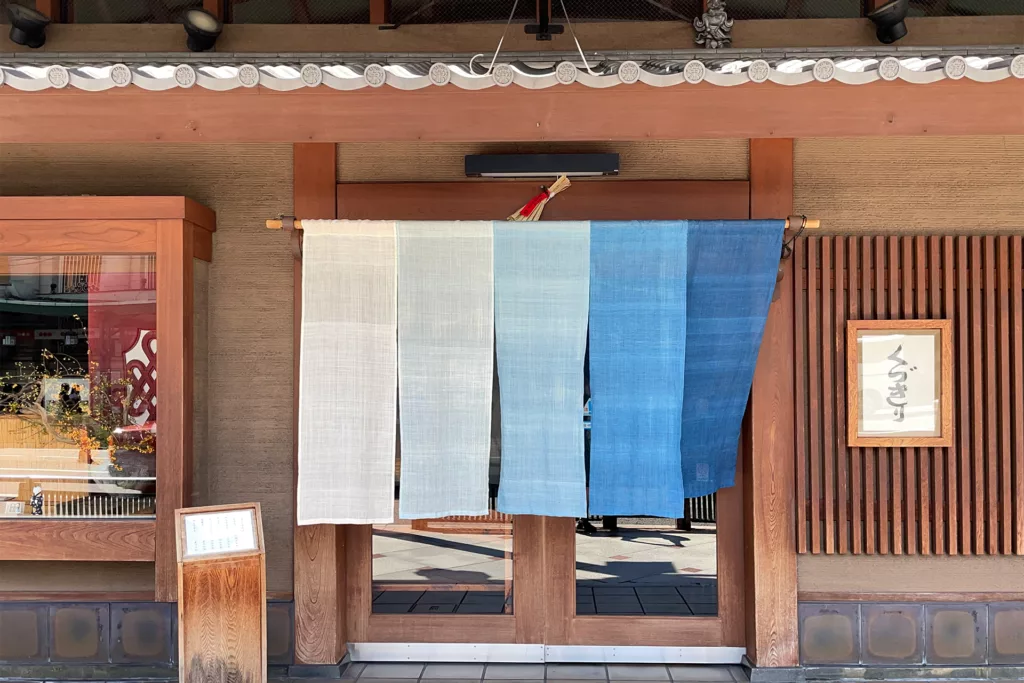
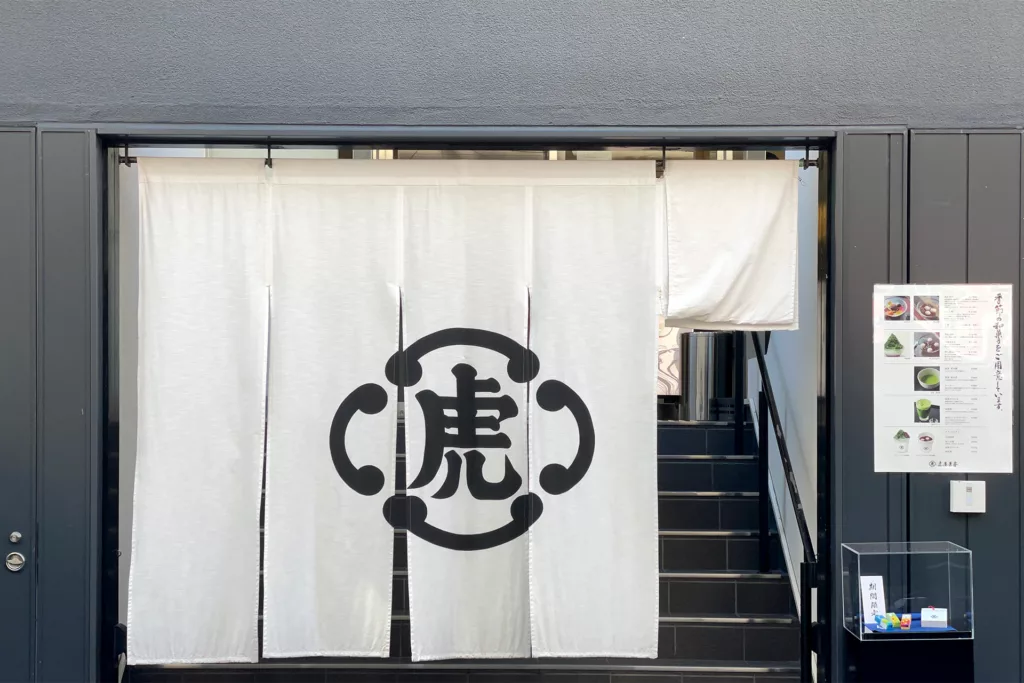
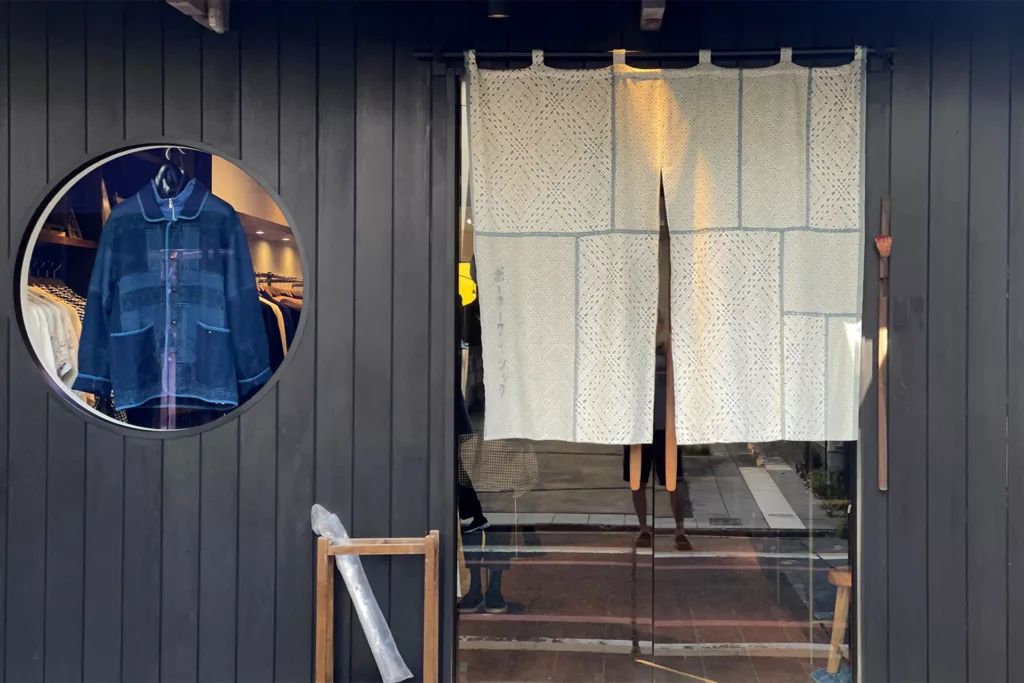
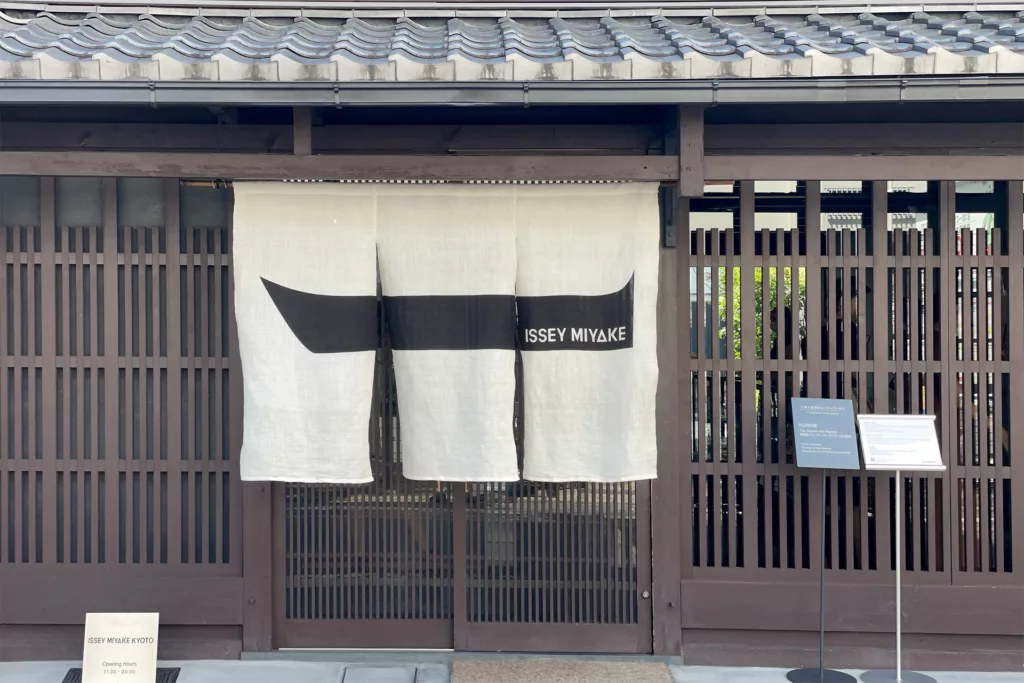
Noren as Textile Art
Beyond their practical and symbolic roles, noren are also celebrated as a form of textile art. Crafted using traditional Japanese dyeing techniques—such as indigo dyeing (aizome), katazome (stencil dyeing), and tsutsugaki (freehand resist dyeing)—noren have become canvases for artistic expression.
At Kogei Art KYOTO, a curated platform for Japanese fine craft, textile artist Yoko Kamitani exhibits hand-dyed indigo noren pieces. Each work reflects the ancient technique and a personal interpretation of nature, tradition, and impermanence—core elements of Japanese aesthetics.

Why Noren Matters Today
Noren is a quiet reminder of continuity, hospitality, and identity in a fast-changing world. They bridge the gap between functionality and beauty, embodying the Japanese concept of “yo no bi” (用の美)—the beauty of everyday usefulness.
Whether you’re a collector, a designer, or simply someone fascinated by Japan, the noren offers a tangible way to connect with centuries of craft, design, and meaning.
Further Reading & References
- Richie, Donald. A Lateral View: Essays on Culture and Style in Contemporary Japan. Stone Bridge Press, 1992.
- Munsterberg, Hugo. The Arts of Japan: An Illustrated History. Tuttle Publishing, 2005.
- Kyoto City Cultural Heritage Division. Traditional Crafts of Kyoto, 2023 Edition.
- Kogei Art KYOTO: www.kogeiart.kyoto.jp
Footnotes
- While fabric dividers are also seen in China and Korea, Japan’s cultural symbolism and usage of noren are distinct. ↩︎
- Nihon no Noren (『日本の暖簾』), Tōyō Keizai Shinpōsha, 2015. ↩︎
- Japanese Advertising History Archives, Dentsu Innovation Institute, 2021. ↩︎
Revised on April 16, 2025
